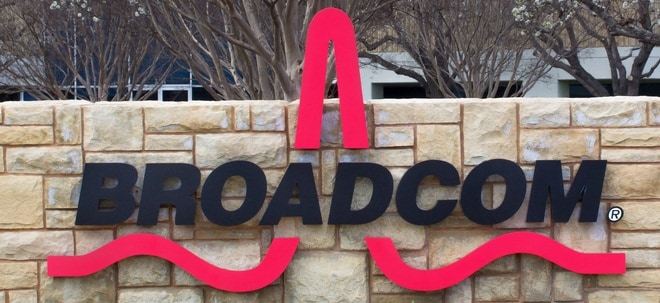China Accelerates Progress on L2 Mandatory Standards, RoboSense Digital LiDAR Becomes the Safety Technology of Choice
SHENZHEN, China, Sept. 19, 2025 /PRNewswire/ -- On September 17, 2025, the Ministry of Industry and Information Technology (MIIT) solicited public comments on the mandatory national standard "Safety Requirements for Combined Driving Assistance Systems of Intelligent and Connected Vehicles" (hereinafter referred to as the "Safety Requirements"). For the first time, this draft standard formally incorporates LiDAR into China's mandatory national standard system for Combined Driving Assistance Systems of Intelligent and Connected Vehicles, marking national-level recognition of LiDAR's safety and reliability.
Simultaneously, the mandatory national standard "Technical requirements and testing methods for advanced emergency braking system of light-duty vehicles" (hereinafter referred to as the "Test Methods") has recently entered the approval stage. Furthermore, MIIT and seven other departments jointly issued a document explicitly proposing the "conditional approval for production and market access of L3 vehicles."
From L2 to L3, from general standards to specific requirements, a refined and full-chain legal and regulatory system is rapidly taking shape in the intelligent vehicle field. This system sets specific performance requirements for intelligent driving, signifying its entry into a new stage of standardized development with clear rules to follow. Meeting these standards has become the "entry threshold" for intelligent driving development.
LiDAR Included in L2 ADAS Mandatory Standard for the First Time in China
This "Safety Requirements" draft formally includes LiDAR in China's standard system for ICV ADAS for the first time. The "Functional Safety Verification and Validation Test Requirements" section explicitly lists various fault types and mentions LiDAR multiple times, clarifying that its reliability is an indispensable part of ensuring the functional safety of the entire ADAS.
The standard sets extremely detailed safety requirements for ADAS, covering a large number of common "challenging scenarios" prone to causing accidents. These include static obstacles like overturned vehicles, traffic cones, water-filled barriers, drum barriers, cardboard boxes, as well as special roads like tunnels and curves, and even extreme dynamic conditions such as sudden vehicle cut-ins and darting-out incidents.
Both the "Safety Requirements" and the "Test Methods" stipulate a series of detailed test scenarios. ADAS must pass these stringent tests to obtain market access qualification.
Among these, in the tunnel-disabled vehicle scenario, the significant difference in light intensity inside and outside the tunnel can easily cause temporary "blinding" of cameras. LiDAR, as an active perception device, is unaffected by drastic changes in ambient light and can directly and accurately detect the distance and shape of overturned vehicles inside and outside the tunnel.
When facing construction obstacles (such as cones, water-filled barriers, and isolation barrels placed at specific angles), especially under the interference of opposing vehicle headlights at night, LiDAR demonstrates stronger identification performance for such obstacles due to its direct distance and shape measurement capabilities and high angular resolution.
Regarding obstacle detection, taking the example of identifying a brown cardboard box on a highway/expressway to avoid collision, millimeter-wave radar and cameras struggle to accurately identify small, dark-colored, low-RCS (Radar Cross-Section) brown cardboard boxes at longer distances. LiDAR can effectively circumvent these limitations.
Digital LiDAR: A Safety Enabler Beyond ADAS Mandatory Standards
The "Test Methods" set detailed performance requirements for collision warning capabilities and emergency braking capabilities regarding different target identifications.
Even when measured against the most stringent performance requirements—such as a detection range of 70.79 meters, horizontal resolution below 0.2°, and vertical resolution below 0.68°—current automotive-grade digital LiDAR products are able to far exceed these benchmarks.
Taking RoboSense's digital LiDAR EMX as an example, its active emission capability makes it immune to ambient lighting conditions. It features an ultra-long detection range of 300 meters and high angular resolution of 0.08° × 0.1°. In the brown cardboard box detection test scenario mentioned above, EMX enables the intelligent driving system to accurately perceive cardboard box obstacles from as far as 170 meters away.
Moreover, EMX provides the intelligent driving system with ample decision-making and response time, allowing the vehicle to smoothly perform lane changes and avoid triggering emergency braking—better aligning with real-world safety and comfort requirements in driving.
Leading Standard Construction, Driving Safety in the AI Era
As a global leader in LiDAR, RoboSense has established a comprehensive standards system covering the full lifecycle—from core LiDAR components to entire device and industry applications—promoting high-quality development across the industry.
Currently, RoboSense is leading the establishment of 3 new national and industry standards, and has participated in the development of 2 international standards and 13 national standards, among which 6 national standards and 1 industry standard have been published. These involve 2 standards for LiDAR complete product testing, 3 for MEMS technology, 1 for laser safety, and 1 for vehicle-infrastructure cooperation. In addition, building on its AI expertise, RoboSense actively participates in the formulation of standards related to autonomous driving and AI, continuously contributing in areas such as autonomous driving datasets, data formats, and Safety of the Intended Functionality.
Fully Meeting the Safety Needs of Different Levels of Autonomous Driving
Led by innovative digital chip technology, RoboSense has launched a high-performance digital LiDAR product matrix primarily consisting of the EM and E platforms, earning recognition from leading global OEMs and top Robotaxi customers.
For the L2 ADAS market, the EMX supports OEMs in fully meeting and exceeding the requirements of the "Safety Requirements" and "Test Methods". The EMX features 192 beams, high-definition point cloud at 2.88 million points per second, and a refresh rate up to 20Hz, enabling effective detection of small objects at long distances.
Due to its excellent performance, the EMX has already received designations from multiple domestic and international OEMs including Geely Auto Group and FAW Hongqi, and is the exclusive choice for 32 models of a leading new energy vehicle manufacturer.
For L3 and above autonomous driving perception, the EM4 + E1 combination, widely regarded as the industry's only mass-producible super combo, has become the preferred configuration for multiple global Robotaxi companies.
The EM4 is the industry's only mass-producible digital LiDAR exceeding 500 beams, supporting customization from 520 to 2160 beams. It has secured main LiDAR designations from several leading North American Robotaxi customers, and its customized versions are already in mass production on popular vehicles such as IM Motors and Zeekr.
The E1, a fully solid-state blind-spot LiDAR, has become the preferred solution for large-scale Robotaxi deployment. It has been officially adopted by 8 leading customers and is already in mass production on Robotaxi models for top-tier companies such as DiDi Autonomous Driving and Pony.ai.
Conclusion
With the introduction of mandatory national standards such as the "Safety Requirements" and the "Test Methods", the Intelligent and Connected Vehicle industry is set to enter a more standardized and safer development environment. The intelligentization of the automotive industry will gain new momentum, while the popularization and application of LiDAR technology will provide safer and more reliable perception capabilities for intelligent driving.
Against this backdrop, RoboSense's EM and E platform products have fully entered mass production and delivery. With the EMX, EM4, and E1 now fully integrated into the NVIDIA DRIVE ecosystem, high-performance digital LiDAR and high-performance computing chips will combine to offer automotive manufacturers robust solutions, further advancing the mass production of intelligent vehicles and large-scale commercial deployment of Robotaxi services.
With the accelerated implementation of multiple standards, including the L2 national standard, automotive intelligence is poised to reach a new inflection point of rapid growth. RoboSense, with its industry-leading and uniquely mass-producible portfolio of high-performance digital LiDAR products, will join hands with automakers to advance intelligent and connected vehicles towards a safer and more comfortable future.
About RoboSense
RoboSense (2498.HK), founded in 2014, is an AI-driven robotic technology company that supplies advanced and reliable incremental components and solutions for the robotic industry. The company is committed to "become a global leader in robotic technology platforms," and its mission is "Safer world, Smarter life." For more information about RoboSense, visit https://www.robosense.ai
![]() View original content to download multimedia:https://www.prnewswire.com/news-releases/china-accelerates-progress-on-l2-mandatory-standards-robosense-digital-lidar-becomes-the-safety-technology-of-choice-302561472.html
View original content to download multimedia:https://www.prnewswire.com/news-releases/china-accelerates-progress-on-l2-mandatory-standards-robosense-digital-lidar-becomes-the-safety-technology-of-choice-302561472.html
SOURCE RoboSense Technology Co., Ltd.


